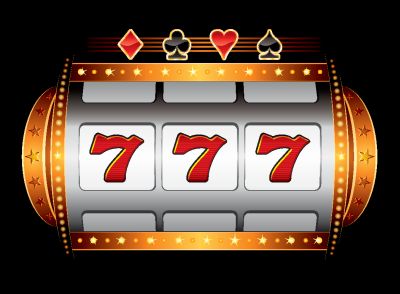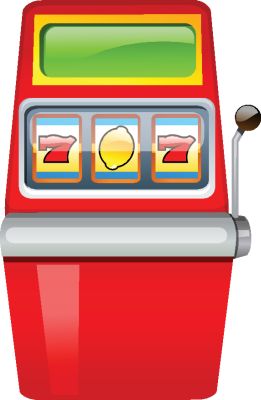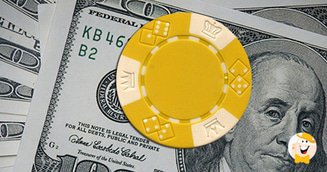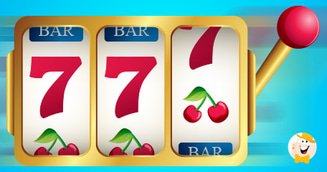
In a topic that has been discussed on a few different occasions on the Wizard of Vegas Forums, as well as in my Blog over there on one occasion, it occurred to me that some of the readers on LCB might not be aware of the differences between Class II and Class III Gaming, so I wanted to do a quick Editorial explaining same for those who happen to find themselves in a Class II jurisdiction or casino. The first aspect of Class II machines that one should understand is that they look and play like regular machines, especially if the game is a Slot game or a Video Keno game, but it actually makes a huge difference if one is a Video Poker player.

Class II machines can often be found in Tribal Casinos throughout the United States, and that is most likely to be the case when the state in question does not have a compact with the casino. Furthermore, Class II machines can also be those that are run directly by the state, and this is the case in a state such as New York, for one example.
Class III machines are simply a designation given to what most people would simply call, ‘Machines,’ and while they may be connected to a regulatory agency (such as a Gaming Division) for the purposes of tracking coin-in and coin-out, each of these machines will operate on a separate EPROM chip with its own Random Number Generator, (RNG) it is this Random Number Generator that determines, at the time the player hits either Spin or Deal, what the results will be. In order to simply the explanation of an RNG, think about it like this: For a slot machine, the reel assignment designates different numbers to the reel stops and when the, ‘Spin,’ button is pressed, the RNG determines what reel stops the machine is going to display and that is the result. For example, if there is a Red 7 symbol on the machine and it is designated as Reel Stop 23 on the first reel and the RNG chooses number 23 when the Spin button is pressed, then the Red 7 will show up on the first reel.
Video Keno games and Video Poker games can work in a very similar way; for the former, the RNG may simply choose twenty numbers from 1-80 and those numbers will be displayed on the screen in the order in which the RNG chose them. With respect to Video Poker, each particular number on the RNG might correspond to a specific card, so if number 33 represents the KIng of Hearts, for example, then the RNG selecting the number 33 for the third card may cause the King of Hearts to appear there. Alternatively, the game might also be simply continuously shuffling a virtual deck of cards for Video Poker, and the game will simply deal out whatever cards are, ‘On the top,’ when the, ‘Deal,’ button is pressed.
When it comes to Video Poker, there is some question from machine-to-machine if the RNG continues to shuffle the remaining deck in order to deal out the cards after the player Draws, or alternatively, if the machine simply deals out ten cards and for cards 6-10 those replace any cards, in that order, that are thrown away by the player. Honestly, any discussion along these lines is immaterial and it really doesn’t matter in what fashion the machine handles that because the Math remains the same as long as the cards are, in some fashion, random.
That’s another thing about the regulation of Class III machines that must be realized, most (if not all) states with these sorts of machines have gaming regulations that state if the game has a physical instrument being represented on the game, (ex. Dice, Cards, Keno Cards/Balls) then the game must play in such a fashion that the probabilities will adhere to the physical probabilities of the physical mechanisms in the long-run. In other words, it has to be completely random, but complete randomness will converge to the Mean in the long-run and the games are tested for that as well as the code scoured to ensure that the machine is playing a fair game.
That is one area that may confuse people with respect to the Class II machines. Class II machines are not only not required to play a fair game, they, in fact, DO NOT play a fair game. If you are playing Video Poker on a Class II machine, the probabilities of getting dealt certain hands are irrelevant. Essentially, Class II machines are also known as, ‘Electronic Bingo,’ or, ‘Electronic Pull Tabs,’ for this reason. The way they work is that there is a central pool of possible results and, when the spin button is hit, a message is sent from the machine to the central pool requesting a result for that particular game, The central server will relay the result back to the machine and the player shall either win or lose.
To be a little more specific, Class II machines are such that the players are effectively betting against one another, like you would in a BIngo game. There are certain, ‘Top Prizes,’ that can be awarded for a really favorable decision from the Central Server as well as lesser prizes that can be awarded as well. It can also be the case with, ‘Electronic Pull Tabs,’ and I will explain how traditional Pull Tabs work in the next paragraph:
Traditional Pull Tab games with physical cards are an extremely apt comparison when it comes to something like this. For those of you who like to, ‘Bonus Whore,’ you have probably stumbled across Pull Tab games on Online Casinos and Online Bingo places because there will occasionally be a Promotion by which one gets so many free Pull Tabs and whatever the result of the Pull Tabs is becomes bonus money that a player has to play through x amount of times and etc., etc. IN any case, physical Pull Tabs come in actual packets, so let’s assume for a second that there is a physical packet that would cost $1,000 (consider 1,000 cards at $1 each) and that returns $750 of the player’s money, or 75%. Those Pull Tabs might have a prize distribution as such:

- $250-1
- $100-1
- $50-2
- $10-5
- $5-10
- $1-200
It would actually be distributed in a more balanced way than that, but that gets my point across. Imagine if the first person who purchases a Pull Tab ends up with the $250 one, what that would leave is only $500 in total prizes spread out amongst 999 tickets for a return of 50.05% on all that remains. In contrast, imagine if 800 tickets are purchased and the two biggest tickets as well as 30 $1, ‘Winners,’ remain; in that event, the return on the remaining tickets would be 190%. Obviously, that would be outstanding, and if I had that information, then I would hurry up and buy all of the remaining tickets, I wouldn’t even do them one at a time out of concern for someone coming in also wanting to buy some of them!
In any event, that is essentially how some Class II games operate. There is a central pool of possible results and when the player hits, ‘Spin,’ or, ‘Deal,’ they essentially request and receive a result from that central pool. In reality, they have actually done nothing except purchase a really flashy representation of a standard Pull Tab. Of course, that’s probably at least a little bit more fun than pulling on the slips of paper and trying to match whatever symbols, but effectively, it is the same exact concept.
There has been some question as to whether or not this could be Advantage played in the fashion that physical Pull Tabs could theoretically be if one was aware of the full prize distribution and all of the previous results and the answer is a highly theoretical, ‘Yes.’ The problem is that a player does not know how much in prizes was put into the initial seed, when the initial seed took place, when prizes will be reseeded and the player likely will not see enough of the results to make an accurate determination as to whether or not the remainder is advantageous. If all of those issues were able to be rectified, then yes, but they probably cannot be, so...theoretically, yes!
This sort of mechanism has a far greater impact for a player who thinks he/she is playing Video Poker (but is actually not) because they might play under the false impression that the cards that they hold or throw away actually make a difference in the outcome of the game. In many of these cases, player decisions make no difference whatsoever. Of course, some may call it misleading to have Class II games that display a physical mechanism such as cards but do not adhere to the actual probabilities of a deck of cards, and, of course, I would actually tend to agree with that person.
When it comes to slot players, this actually makes less of a difference, particularly so for low denomination slot players. For instance, the racetracks in the State of New York operate machine that the state designates as, ‘Video Gaming Machines,’ (VGM’s) but are effectively just Class II machines with a fancier name. In the State of New York, the minimum permissible return to player of any given machine is 90%, so as a result, a low-bet slot player playing one of these machines in New York might actually have it better than in other states such as Nevada (the minimum return for a Class III machine is 75%) or West Virginia (the minimum return for a Class III machine is 80%) because the low denomination games might actually pay worse than 90%.
If you’re ever going to an unfamiliar area, then it might be important for you (especially if you play Video Poker, and to a lesser extent, Video Keno) to do some Online research to determine whether or not the machines there are Class II or Class III machines prior to playing. If the area in question is anywhere within the United States, then you could probably simply pay a visit to the WizardofVegas Forums and ask the question and someone would likely be able to tell you within a few hours (when they see the message) what sorts of machines are available in that state. In some states, it actually takes researching the laws/statutes of the Gaming Division (if applicable) to determine this information, but someone on the Forums would likely know almost immediately.

I cannot emphasize enough the importance of knowing whether you are playing a Class II game as opposed to a Class III game. The reason is that, aside from knowing ahead of time what time of game it is, there is often little to nothing that immediately differentiates one game from another game. For instance, a Video Poker paytable or Video Keno paytable may look like it pays in the High-90’s, or perhaps even North of 100% based on what is displayed on the paytables, but that is all meaningless because the cards are not random. You hit the, ‘Deal,’ button and a Central Processor decides whether or not you win, and if so, how much you win. The decisions that you make with respect to the cards do not matter.
In fact, some games even have a, ‘Genie,’ that appears after you have drawn new cards and will change some of the cards to represent the result that the Central Server wanted if you held cards that otherwise made the desired result impossible. While I would not be surprised if IGT eventually comes out with a Video Poker variation in which a genie can come and improve your final hand for extra credits bet, (they’ve come up with just about every other variation one could possibly think of, after all) such a game is not the case yet and if you see a genie, you’re playing a Class II machine.
Finally, I am not necessarily categorically suggesting that machines such as these should absolutely not be played. Again, New York has a minimum return to player of 90% per State law, and when it comes to really small bets on a slot machine, 90% can actually be pretty good compared to some other machines. Personally, I would need to have a really good reason to play a machine with a Base Pay of 90%, and that would obviously involve something that made the machine effectively no longer 90%, but for some people...that’s a decent game for small wagers. The main point that I want to get across is that the payback of the machine based on whatever the paytables are is irrelevant and has absolutely nothing to do with that the machine does in the long run. Video Poker players tend to play the game because they expect returns of 97%+, and hopefully better, and that’s not what you are getting when you sit down at a Class II machine.










Fridayhigh 7 years ago
7 years ago
That's exactly how the Swedes have transformed online gaming. It's a win win for the software manufactures and the casinos all the time. No risk at all. They can never be hit or take a loss, unless it'a a live table. Playing slots at a flash base casino with central gaming server type software is like hitting your number...
That's exactly how the Swedes have transformed online gaming. It's a win win for the software manufactures and the casinos all the time. No risk at all. They can never be hit or take a loss, unless it'a a live table. Playing slots at a flash base casino with central gaming server type software is like hitting your number on roulette and getting paid 5 to 1 because 7 other players were betting the same number. Great for them, but a joke for the player.
Show morePlease enter your comment.
Your comment is added.
Mission146 7 years ago
7 years ago
JennaROX, That situation would only be true on certain Class II machines and would absolutely not apply on a Random Class III device. In the event that you only held the Three-of-a-Kind on a Full House, then the possibilities are getting drawn a different Full House, hitting Quads (Four of a Kind) hitting a Five of a Kind...
JennaROX, That situation would only be true on certain Class II machines and would absolutely not apply on a Random Class III device. In the event that you only held the Three-of-a-Kind on a Full House, then the possibilities are getting drawn a different Full House, hitting Quads (Four of a Kind) hitting a Five of a Kind (if you are playing a game with at least one Wild Card) or only ending up with a Three of a Kind. In fact, there are certain situations in certain games, such as Triple Double Bonus, in which it is correct to throw away the Full House. For example, on any hand where the Three-of-a-Kind part of the Full House is Aces-Deuces-Threes-Fours, then the correct decision would be to throw away the other two cards because of how much the Quads or Quads with a kicker pay. Your question made perfect sense, by the way, I hope you enjoyed your gardening!
Show morePlease enter your comment.
Your comment is added.
JennaROX 7 years ago
7 years ago
Jade... "ditto" ... lots of info here & although someone has tried showing me just how silly my gaming choices are, I tend to blindly bounce along the same path. What a fool, I am! Pierce, a few years ago, I read about RNG & I vaguely remember some mention of the following scenario... When playing video poker, the RNG has...
Jade... "ditto" ... lots of info here & although someone has tried showing me just how silly my gaming choices are, I tend to blindly bounce along the same path. What a fool, I am! Pierce, a few years ago, I read about RNG & I vaguely remember some mention of the following scenario... When playing video poker, the RNG has already determined my outcome, once the bet is placed. My decision to draw 2 or 3 or 4 cards will not change the outcome. In other words, if I am dealt a full-house Q's & 3's, & I throw away the 3's, I will basically get dealt another pair to make up the full-house.... is this true? If so, how can that be possible with all of the variables available for the hand? I could simply draw one card, would I get another 3? I hope this makes sense, I am supposed to outside gardening & it's already 4:30... I will check back later to see if I can re-phrase some of this run-on sentence.
Show morePlease enter your comment.
Your comment is added.
Mission146 7 years ago
7 years ago
Jade, That's exactly right, while what I write seeks to teach concepts from a Beginner Level on, it is definitely assumed that the reader has enough of an interest in gambling to want to slog through the math and material, whichever is the case that particular Editorial. I definitely appreciate your compliment about the...
Jade, That's exactly right, while what I write seeks to teach concepts from a Beginner Level on, it is definitely assumed that the reader has enough of an interest in gambling to want to slog through the math and material, whichever is the case that particular Editorial. I definitely appreciate your compliment about the information being good! When it comes to Online Games, House-Banked games (such as Table Games and Slots) would be presumed to work in the same manner as Class III games would in a Brick & Mortar Casino while Player-Banked games, of course, are just Player-Banked Games. Absent anything in the Terms & Conditions (or Warnings) to the contrary, Online Games are expected to behave randomly, as would the games in a casino, and it is precisely this randomness that the various companies that certify games as far (as required by the licensing of the jurisdictions, usually) look for.
Show morePlease enter your comment.
Your comment is added.
jade 7 years ago
7 years ago
This is a lot of information, good information nonetheless, but a lot to absorb with my first cup of coffee. When I first began reading this article, it reminded me of another read I did many years ago in nursing school which basically stated that if you read all the information about any particular drug or medication,...
This is a lot of information, good information nonetheless, but a lot to absorb with my first cup of coffee. When I first began reading this article, it reminded me of another read I did many years ago in nursing school which basically stated that if you read all the information about any particular drug or medication, (ibuprofen for example) you know, side effects, safety, etc., you wouldn't take it, ever..... I think that the "occasional gambler" would feel the same way about this article, but then again, those people probably don't belong to a gambling forum either. For the gambling enthusiast, for lack of a better term, like myself, that want to know more about the inner workings of gambling machines as well as the industry itself , let me just say, "I really didn't know, but I do now and it will make a difference! One question though. You didn't mention online games of the same persuasion and if they are similarly classified or is that a whole different article for another time..........
Show morePlease enter your comment.
Your comment is added.